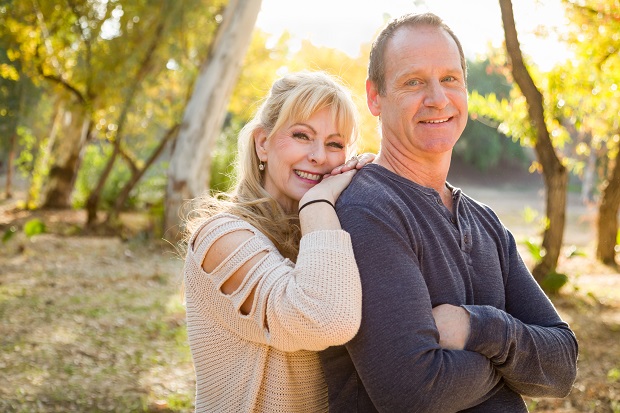
Do you believe that if you have to work on a relationship, it’s not the right relationship for you? Having worked with couples for over 50 years, I can tell you without a doubt that this is NOT true!
However, “working on a relationship,” doesn’t mean that it has to be hard. It primarily means that you continually learn and grow toward being an ever-more-loving person. While we don’t need to be in a relationship to continue to evolve toward being more loving, relationships trigger all that is unhealed within us, thereby offering us wonderful opportunities for healing and growth.
Here are eight keys that I’ve found to be essential in creating a joyful, loving relationship:
1. Take responsibility for your own feelings rather than blame your partner. Self-abandonment is the primary cause of relationship failure. You abandon yourself when you avoid responsibility for your feelings by:
- Staying focused in your head rather than learning to be present in your body and your feelings
- Judging yourself rather than learning to love and value yourself
- Turning to addictions to numb your feelings
- Making your partner responsible for your feelings
When you abandon yourself, you disconnect from yourself, which makes it impossible to connect with your partner. Instead, you are likely to blame your partner for your resulting unhappiness. Learning how to learn from and manage your painful feelings is the most essential key to creating a loving relationship.
2. Don’t Take Your Partner’s Behavior Personally. We all come into relationships with baggage from our growing-up years. No one emerges from childhood unscathed. Each person comes into the relationship with learned ways of managing their feelings and reacting to conflict. Each person has their own wounds that can be triggered by different situations. It’s vitally important that you learn to not take yourpartner’slearned and unloving ways of managing his or her feelings and conflicts personally. His or her anger, resentment, withdrawal or resistance is not about you.
This doesn’t mean that you won’t feel lonely and heartbroken when your partner disconnects from you. It always hurts our heart when a beloved person disconnects from us, and we each need to learn to be very compassionate and gentle with these painful feelings. But not taking our partner’s behavior personally allows these feelings to move through us fairly quickly. Taking our partner’s behavior personally keeps us stuck in our own triggered responses — our own anger, compliance, withdrawal or resistance.
3. Compassion rather than judgment — letting go of control. Judging yourself or others is a form of control that backfires, both on the inner level and also within relationships. Practicing bringing compassion to your own woundedness, and to your mistakes, fears and failures makes it far easier to be compassionate toward your partner’s woundedness and mistakes. We all want acceptance and we feel close to those who accept us. When you learn to love, value and accept yourself, you will find yourself being far more accepting of your partner.
If your partner’s behavior is truly intolerable to you, then you need to consider leaving. Our only viable choices are to accept or to leave. Getting your partner to change through controlling behavior is not a viable choice, since it doesn’t work. Your partner will change only when he or she wants to — not when you try to change him or her through your controlling behavior.
4. The intent to learn. At any given moment, we choose our intent: either the intent to avoid our pain — through some form of controlling behavior — or the intent to learn about loving ourselves and others.
While controlling behaviors create distance and unsafe relationship space, relationships thrive in the safe space created by the intent to learn about both yourself and your partner. Love flourishes when partners want to learn about themselves and caringly understand each other.
5. Lovingly disengage in conflict when one or both are not open to learning. You cannot resolve conflict until you are both open, so when you and/or your partner are not open to learning, one of you needs to lovingly disengage until both of you are open. Lovingly disengaging means that you walk away from the conflict without anger or blame — keeping your heart open and doing your own inner work. When you are open again, you can check to see if your partner is also open. If he or she is, you can explore the conflict with an intent to learn. Much learning about yourself and your partner can occur when both of you are open, and this learning deepens your intimacy.
6. Have each other’s backs. In a loving relationship, we watch out for each other. We know each other’s triggers and vulnerabilities and we do what we can to support each other through the difficult times. This is one of the great values of a loving relationship — that we have someone to lean on when life becomes challenging or overwhelming for us. We all need this kind of support.
7. See the best in your partner. We all have a beautiful essence — our true core self. This is likely what you fell in love with about your partner. Our essence often gets covered up by our wounded controlling behaviors, but as people do their inner-healing work, their essence begins to emerge. We can help each other with this healing by telling each other about what is wonderful about the other person. Pointing out whatwe love about each other is loving and supportive, while pointing out what we don’t like undermines our partner and the relationship.
8. Fun, laughter and play. Having fun together, laughing and playing together are vital parts of a loving relationship. Be sure to make time for this, as it likely won’t happen unless you plan the time for it.
It will be helpful if you let go of thinking of this as work, and instead look at it as a wonderful healing and growth process that can occur between partners. There can be so much joy — in healing the old blocks to fully loving!



